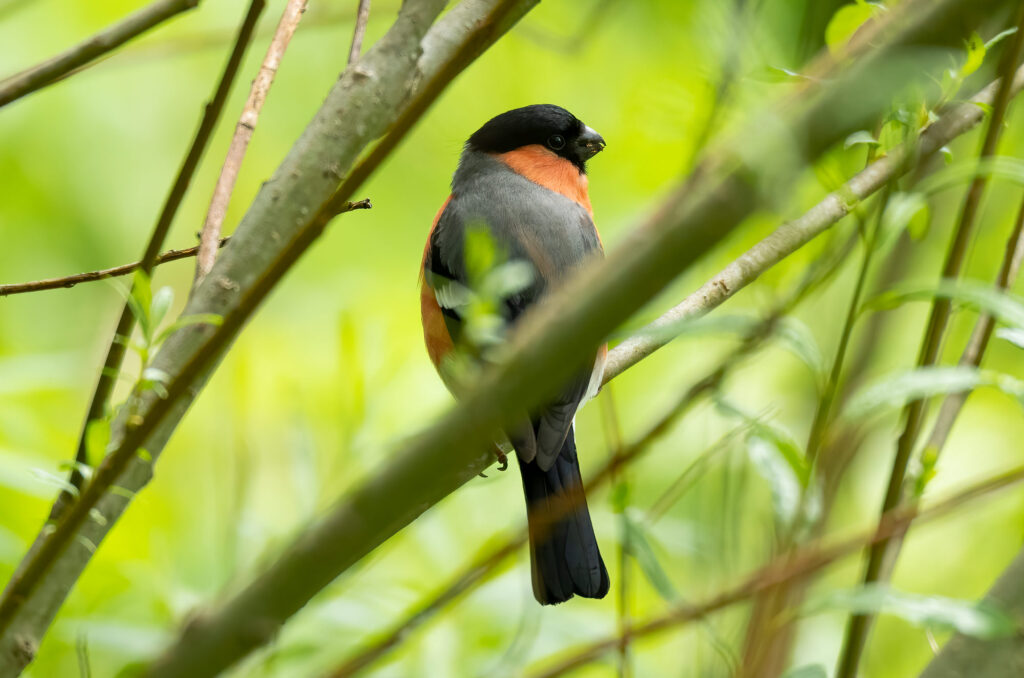The distinctive plumage of the bullfinch screams extrovert. The contrast between the monochrome head and wing colouring with the flame-red breast on the male is stunning. And while the breast colour of the female is a muted peach, she is no less striking in appearance. However, for such a bold-coloured bird, the bullfinch is a shy species but one that will reward a patient and quiet photographer.
The easiest way to find a bullfinch is to keep your ears open. This species loves to hide in thick cover, where even the bright red chest of the male would be unlikely to catch your eye. However, if you put your effort into hearing them, they become much easier to see. Once you have tuned in to their soft “peu/heu” call (think a dapper, blushing Hugh Grant, and you can’t go wrong), it is hard to miss.
The next step is to stop and stay still. Tune into your surroundings, and you will probably spot some branches moving near where the call came from. Like most finch species, bullfinches are messy eaters, eating up to 30 flower buds a minute. If they are feeding nearby, you will likely spot movement in the tree or bush. If you stay still and wait near an exposed branch, you may get lucky and have the opportunity for a clean shot.
I captured the image of the male bullfinch below by following the steps above. The call alerted me to his presence and after I paused my walk it was easy to spot the branches rustling where he was busily munching away. He was so focused on feeding that I could stand metres away without disturbing his activity. It is worth increasing your ISO to compensate for their constant movement – or you risk capturing a red-and-black blur.

The feeding habits of bullfinches have also landed them in trouble in the past. Henry VIII condemned their “criminal attacks” on fruit trees in orchards in the 16th century. Back then, you could earn one penny for every bullfinch you killed. More recently, during the 1950s to mid-1970s, they consumed so many flower buds that they were labelled a pest by commercial fruit farmers, which led to licensed control at a time when the species were abundant. Now it is a different story, as it is with so many of our bird species. Bullfinches are struggling, likely due to the changes in agricultural practices and the loss of their key habitats like woodlands, orchards and hedgerows.
As they may have to travel long distances from their nests to feeding sites, bullfinches have food sacs positioned in the floor of the mouth that allow them to carry food back to their chicks. They are the only species of finch to have these sacs.
Loathed for their love of fruit trees by farmers (and Henry VIII) but loved by those that caught them and kept them for their beauty and mimicry, bullfinches have a chequered past. Hopefully, improvements in nature-friendly farming practices – amongst other interventions – will ensure a brighter future for this bashful beauty.

